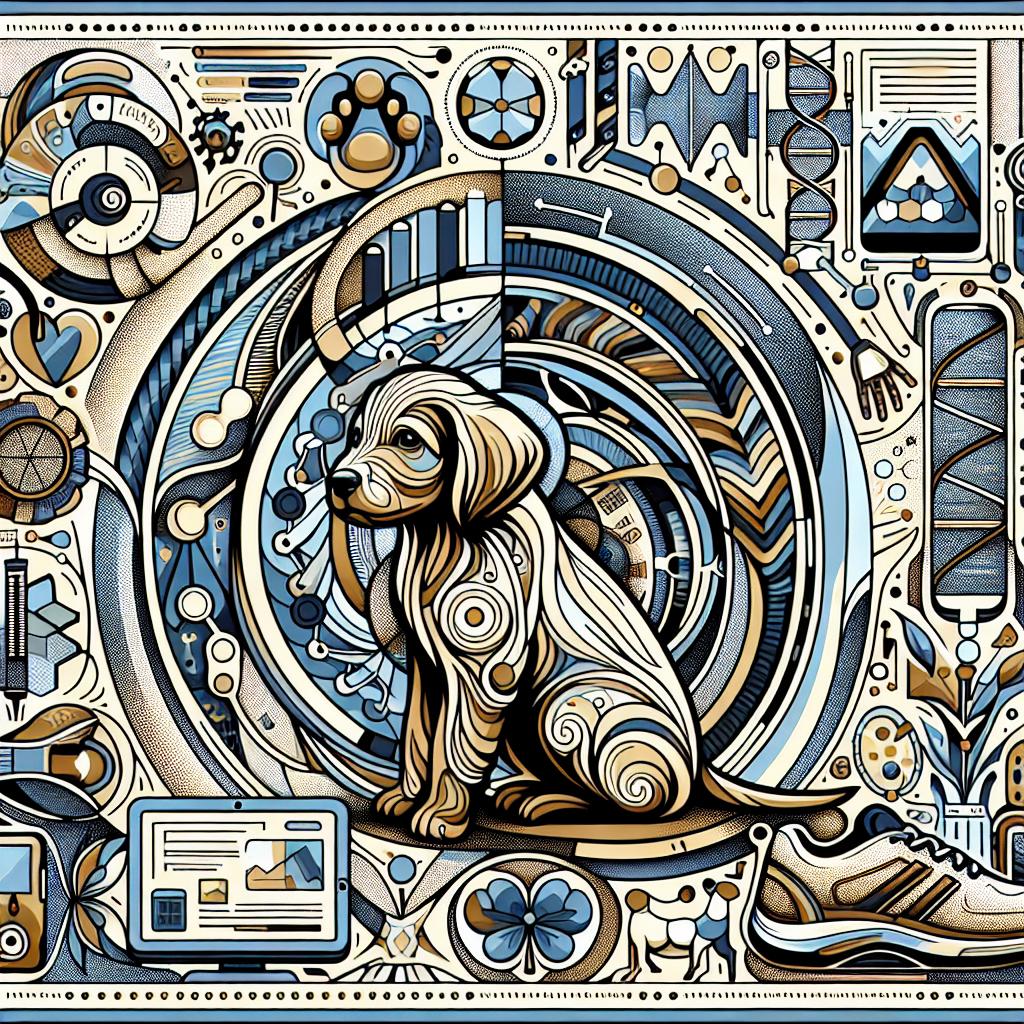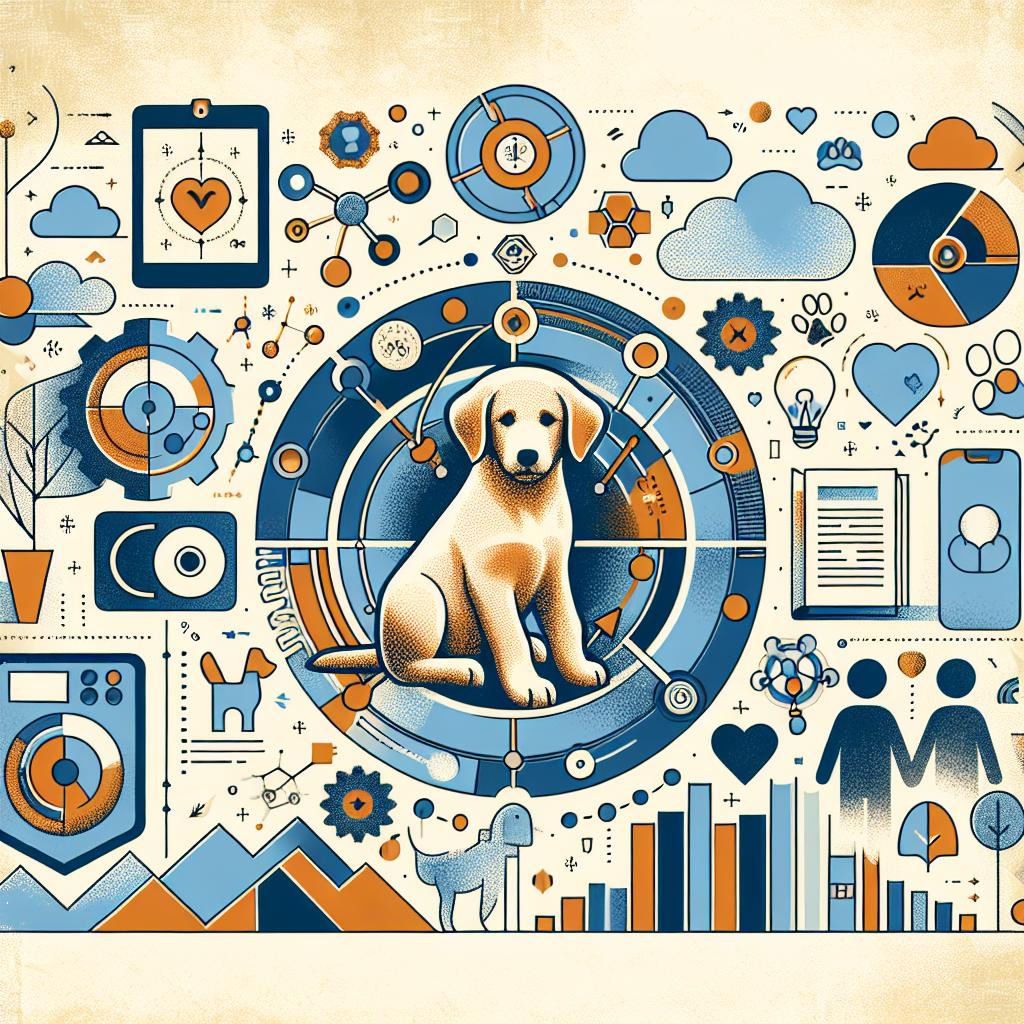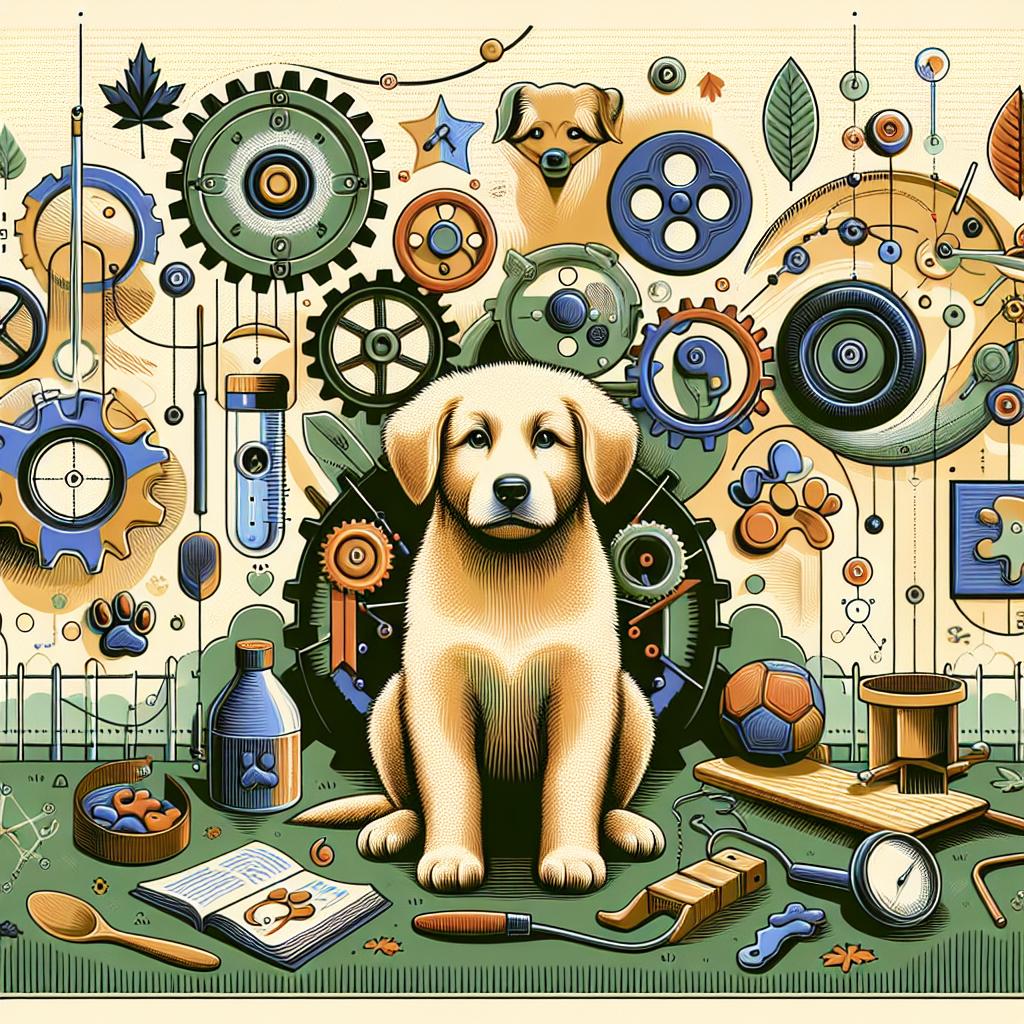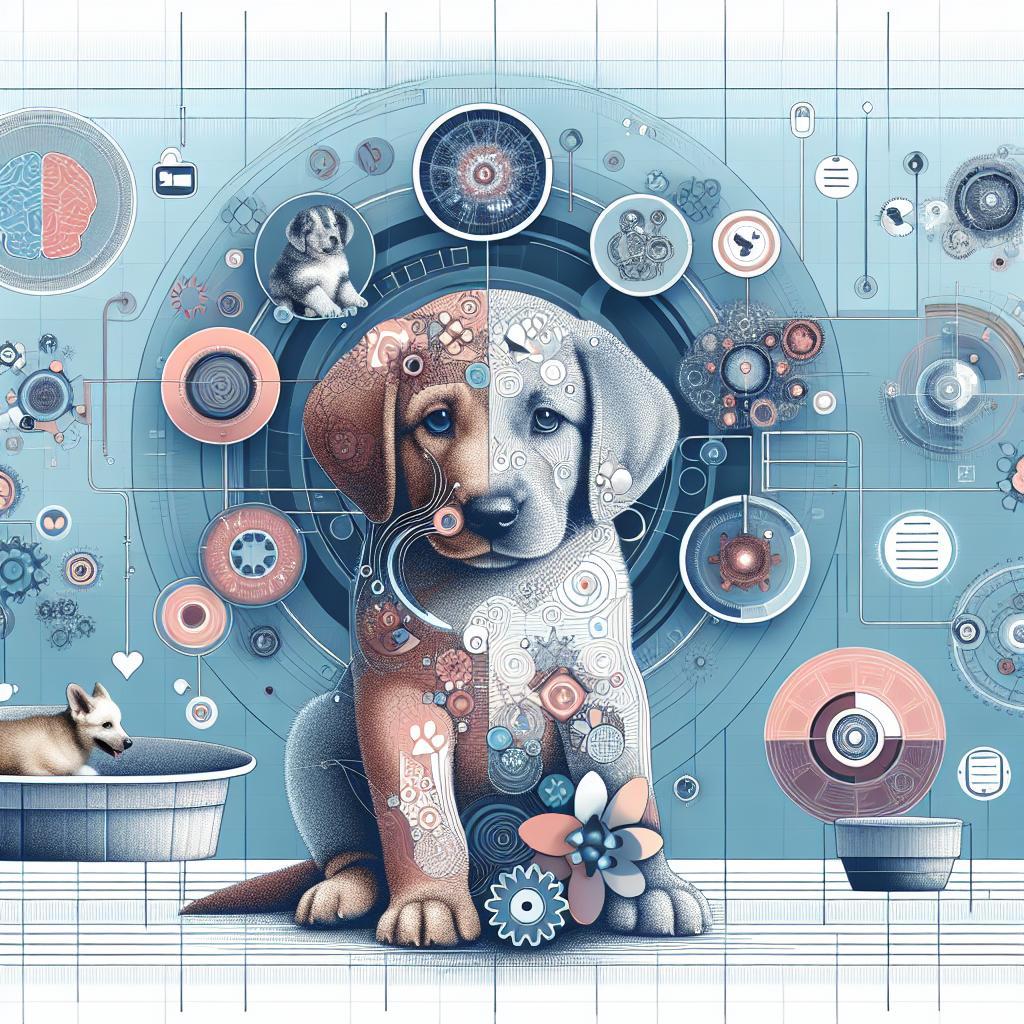Puppies are often likened to blank slates, brimming with potential and eager to discover the world around them. Just as a painter meticulously prepares their canvas, new pet owners have the unique opportunity to shape their furry companions’ behaviors from the very beginning. Early behavior training for puppies is not merely a recommendation; it is a fundamental component of responsible pet ownership. This crucial phase in a puppy’s development lays the groundwork for future interactions, both with humans and other animals. By understanding the significance of early training, pet parents can cultivate a well-adjusted, happy canine companion, equipped to navigate the complexities of life with confidence. In this article, we will explore the myriad benefits of initiating behavior training during these formative months and offer insights to help you embark on this rewarding journey.
Understanding the Critical Window for Puppy Learning
The first few months in a puppy’s life are nothing short of transformative, marking a critical period for learning and socialization. During this time, their brains are growing at an astonishing rate, absorbing new experiences, behaviors, and commands. To make the most of this invaluable window, it is essential to expose them to a variety of environments, people, and other animals. A well-rounded experience can foster not only adaptability but also confidence, reducing the risk of future behavioral issues. Key activities include:
- Socialization: Introduce your puppy to different people and pets to encourage friendly interactions.
- Training: Utilize positive reinforcement techniques to establish basic commands and build focus.
- Exploration: Allow your puppy to explore various surroundings, from parks to busy streets, ensuring they feel safe and curious.
In this critical learning phase, reinforcement is vital. Puppies respond best to early training methods that are both engaging and enjoyable, setting the foundation for future learning. The chart below illustrates different types of training methods suited for puppies:
| Training Method | Description | Benefits |
|---|---|---|
| Clicker Training | Uses a click sound to mark desired behaviors. | Enhances communication and timing. |
| Positive Reinforcement | Rewards good behavior with treats or praise. | Builds trust and eagerness to learn. |
| Socialization Classes | Group sessions to expose puppies to new stimuli. | Encourages appropriate behavior around others. |

Building a Strong Foundation: Key Training Techniques for Success
Establishing a proactive training routine during a puppy’s early months lays a crucial groundwork for their development. Puppies are naturally inquisitive and impressionable, making this period the perfect time to instill essential skills. Focus on reinforcing positive behavior through rewarding techniques to encourage compliance and eagerness to learn. Utilize short training sessions, spaced throughout the day, to maintain your pup’s attention and enthusiasm. Incorporating the following methods can enhance the training experience:
- Consistency: Use the same commands and cues to build recognition.
- Positive reinforcement: Reward good behavior with treats, praise, and play.
- Socialization: Introduce your puppy to various people, environments, and other animals.
Additionally, employing structured activities can help sharpen your puppy’s skills and offer proper outlets for their energy. Engaging in agility training, basic obedience, and interactive games fosters a deeper bond between you and your furry companion. The following table summarizes some effective training techniques:
| Technique | Benefits |
|---|---|
| Basic Commands | Foundation for good behavior |
| Leash Training | Promotes safe walks |
| Playtime | Strengthens the human-animal bond |
| Socialization | Reduces fear and anxiety in new situations |
The Role of Socialization in Shaping a Well-Behaved Dog
Socialization plays a crucial role in the development of a well-behaved dog, especially during the vulnerable early stages of a puppy’s life. By introducing puppies to different environments, people, and other animals, owners are effectively teaching them how to navigate the world. This early exposure helps prevent behavioral issues later on, as socialized puppies tend to be more confident and less fearful. A well-rounded social experience includes:
- Interactions with various people: Different ages, genders, and ethnic backgrounds.
- Exposure to other animals: Including other dogs, cats, and even livestock.
- Experiencing different environments: Parks, busy streets, and quiet spaces.
- Handling by different individuals: This can include vet visits and grooming.
When dogs are properly socialized, they are less likely to exhibit behaviors such as aggression, fear, or anxiety during encounters with the unknown. A structured socialization plan, particularly during the critical period of 3 to 14 weeks of age, can yield significant benefits in behavioral outcomes. Here is an overview of simple yet effective milestones during this period:
| Age (weeks) | Socialization Activity |
|---|---|
| 3-4 | Gentle handling by family members |
| 5-6 | Introduction to friendly dogs |
| 7-8 | Exposure to various sounds |
| 9-10 | Short trips to different environments |

Navigating Challenges: Common Behavioral Issues and Their Solutions
Puppies, while adorable and full of energy, can present a variety of behavioral challenges that may arise as they grow. Common issues include excessive barking, chewing, and house soiling, which can frustrate both the owner and the pup. Addressing these behaviors promptly through appropriate training methods can prevent them from becoming ingrained habits. Implementing a consistent routine can be particularly effective. This includes setting regular feeding times, play sessions, and bathroom breaks to establish expectations and boundaries.
When it comes to solving behavioral issues, positive reinforcement is often the most successful approach. By rewarding desired behaviors, you create a positive association in your puppy’s mind. Here are some strategies to consider:
- For barking, redirect their attention to a toy when they start to bark, then reward them for playing quietly.
- If your puppy is chewing on furniture, provide them with appropriate chew toys and praise them when they choose those instead.
- To combat house soiling, take your puppy outside frequently to reinforce good bathroom habits and reward them when they go outdoors.
Q&A
Q&A: The Importance of Early Behavior Training for Puppies
Q1: Why is early behavior training important for puppies?
A1: Early behavior training is crucial for puppies as it lays the foundation for their future behavior and overall well-being. Just like young children, puppies are highly impressionable, and the experiences they encounter during their formative months can significantly shape their personality and social skills. Early training helps establish good habits, reduces the likelihood of behavioral problems, and fosters a deeper bond between the puppy and owner.
Q2: What key behaviors should puppy training focus on?
A2: Focus on basic commands such as sit, stay, and come, which promote discipline and understanding. Socialization is equally important; expose your puppy to various environments, people, and other animals. Teaching proper potty habits and bite inhibition also form critical aspects of early training, ensuring that your puppy learns boundaries and appropriate behaviors from the start.
Q3: At what age should training begin?
A3: Training can begin as early as 7 to 8 weeks of age. At this stage, puppies are often receptive to learning and can absorb new information quickly. However, it’s important to use positive reinforcement techniques to make training a fun and rewarding experience. This fosters a positive demeanor towards learning for the puppy.
Q4: What methods are most effective for training puppies?
A4: Positive reinforcement is the most effective method for training puppies. Using treats, praise, and play as rewards encourages them to repeat desired behaviors. Consistency is key; practicing commands regularly and in different environments can help reinforce the lessons learned. Additionally, patience and gentleness during training sessions cultivate trust and make the process enjoyable for both puppy and owner.
Q5: Are there any common mistakes to avoid during puppy training?
A5: Yes, several pitfalls can hinder effective training. Avoid harsh discipline, as this can instill fear rather than encourage learning; instead, focus on redirection and rewards. Also, be wary of inconsistent training—using different commands or rewards can confuse your puppy. Lastly, remain realistic about expectations; every puppy learns at their own pace, and encouraging small victories along the way is essential.
Q6: How can puppy owners ensure their training is successful?
A6: Success hinges on setting realistic goals and remaining consistent throughout the training process. Regular practice, socialization opportunities, and attending puppy classes can greatly enhance training effectiveness. Building a strong, trusting relationship with your puppy facilitates better learning. Lastly, don’t hesitate to seek professional guidance if you encounter challenges—expert trainers can offer valuable insights tailored to your puppy’s needs.
Q7: What are the long-term benefits of early behavior training?
A7: The long-term benefits are substantial, as early behavior training can lead to a well-adjusted, obedient dog that integrates smoothly into family life and society. Properly trained dogs are less likely to develop behavioral issues, reducing the chances of anxiety, aggression, or destructive habits. Moreover, strong foundational training fosters a positive relationship between the dog and its owner, encouraging lifelong companionship and enjoyment.
Q8: Where can puppy owners find resources for training their pets?
A8: A myriad of resources is available for puppy owners, including local puppy training classes, online courses, and books dedicated to canine behavior. Websites such as the American Kennel Club (AKC) offer valuable information, while community pet stores often provide workshops. Additionally, seeking advice from a veterinarian or a certified dog trainer can help steer you toward the best resources specific to your puppy’s needs.
Key Takeaways
As we conclude our exploration of the significance of early behavior training for puppies, it becomes clear that nurturing the foundation of a well-behaved canine companion is an investment that pays dividends throughout their lives. Just as seedlings require care and attention to flourish, so too do our furry friends need guidance to develop into confident and sociable adults. By initiating training early, we set them on a path of understanding, trust, and cooperation that enhances the bond between pet and owner.
Ultimately, early behavior training is not merely about correcting unwanted actions but fostering positive habits that facilitate seamless interactions within our homes and communities. The joy of walking a well-trained dog, the tranquility of an obedient companion, and the peace of mind that comes with a well-behaved pet are traits every dog owner can aspire to achieve.
So, as you embark on this rewarding journey with your new puppy, remember that patience, consistency, and a sprinkle of creativity are your most reliable tools. With each training session, you are not just shaping a pet but investing in a friendship that will enrich both your lives for years to come. Embrace the process, and watch as your puppy transforms into the well-mannered companion you’ve always dreamed of.

